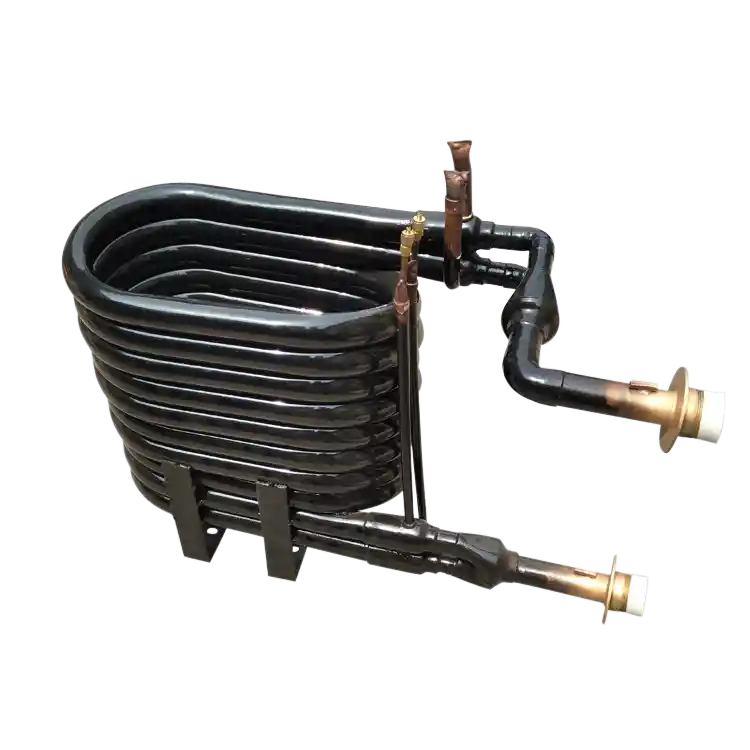Introduction
The assembly and connection of tubes in coaxial heat exchangers play a crucial role in the overall performance and efficiency of the system. This article focuses on tube-to-tube connections in coaxial heat exchangers and explores the various methods, techniques, and considerations involved in achieving seamless assembly. By understanding the importance of precise connections and implementing appropriate measures, manufacturers can ensure optimal functionality and reliability of coaxial heat exchangers.
1. Significance of Tube-to-Tube Connections
The tube-to-tube connections in coaxial heat exchangers are critical for several reasons. This section highlights the significance of seamless connections.
1.1 Efficient Heat Transfer
The quality of tube-to-tube connections directly impacts heat transfer efficiency. A well-designed and properly connected coaxial heat exchanger allows for maximum surface contact between the inner and outer tubes, facilitating efficient heat exchange between the fluid streams. Seamless connections minimize thermal resistance and ensure effective heat transfer.
1.2 Prevention of Leakage
One of the primary concerns in tube-to-tube connections is preventing leakage. A secure and tight connection prevents fluid leakage between the inner and outer tubes, maintaining system integrity and preventing energy loss. Proper sealing methods and reliable connection techniques are essential to ensure a leak-free operation.
1.3 Structural Integrity
The structural integrity of the coaxial heat exchanger relies on robust tube-to-tube connections. Strong and secure connections resist internal and external forces, maintaining the shape and alignment of the heat exchanger during operation. Properly connected tubes enhance the overall durability and longevity of the system.
2. Techniques for Tube-to-Tube Connections
Various techniques can be employed to achieve seamless tube-to-tube connections in coaxial heat exchangers. This section explores some common methods used in the industry.
2.1 Welding
Welding is a widely used technique for tube-to-tube connections in coaxial heat exchangers. It involves joining the tubes using heat and pressure, creating a strong and permanent bond. Different welding methods, such as TIG (Tungsten Inert Gas) welding or laser welding, can be employed depending on the materials and requirements of the heat exchanger.
2.2 Mechanical Connections
Mechanical connections provide flexibility and ease of assembly in coaxial heat exchangers. Common mechanical connection methods include flaring, swaging, or using compression fittings. These techniques involve creating a mechanical joint between the tubes, ensuring a secure and reliable connection without the need for welding.
2.3 Adhesive Bonding
Adhesive bonding offers an alternative method for tube-to-tube connections in certain applications. It involves using specialized adhesives or sealants to bond the tubes together. Adhesive bonding can be particularly useful when joining dissimilar materials or when welding is not feasible. However, it is essential to select adhesives compatible with the operating conditions and ensure proper surface preparation for effective bonding.
3. Considerations for Seamless Assembly
Achieving seamless assembly in tube-to-tube connections requires careful consideration of several factors. This section discusses important considerations to ensure successful connections.
3.1 Material Compatibility
Material compatibility is crucial for reliable tube-to-tube connections. The inner and outer tubes, as well as any connecting components, should be made from materials that are compatible with the fluids and operating conditions of the heat exchanger. Compatibility prevents corrosion, ensures proper bonding, and maintains the integrity of the connection over time.
3.2 Surface Preparation
Proper surface preparation is essential to achieve strong and durable tube-to-tube connections. Before assembly, the surfaces of the tubes should be cleaned, free from contaminants, and appropriately prepared. Surface treatments such as degreasing, sanding, or chemical treatments may be necessary to ensure optimal bonding or welding.
3.3 Alignment and Fit
Accurate alignment and fit between the inner and outer tubes are critical for efficient heat transfer and preventing leakage. Precision manufacturing techniques and inspection processes should be employed to ensure the tubes are aligned concentrically and fit together seamlessly. Any misalignment or gaps can compromise performance and integrity.
4. Quality Assurance and Testing
To ensure the reliability and performance of tube-to-tube connections, comprehensive quality assurance and testing procedures are necessary. This section discusses the importance of quality control measures and testing techniques.
4.1 Visual Inspection
Visual inspection is an essential step in quality control, allowing for the detection of visible defects or irregularities in tube-to-tube connections. It involves carefully examining the connections for proper fit, alignment, and any signs of damage or misalignment.
4.2 Pressure Testing
Pressure testing is a common method to evaluate the integrity and leak resistance of tube-to-tube connections. It involves subjecting the assembled heat exchanger to specific pressure levels while monitoring for any pressure drop or signs of leakage. Pressure testing helps identify weak points in the connections and ensures that the heat exchanger can withstand the intended operating conditions.
4.3 Performance Validation
Performance validation tests are conducted to assess the overall efficiency and effectiveness of the tube-to-tube connections in the heat exchanger. These tests involve measuring heat transfer rates, pressure drops, and other performance parameters under simulated or actual operating conditions. Performance validation ensures that the connections meet the required specifications and deliver the expected performance.
Conclusion
Seamless tube-to-tube connections are vital for the successful assembly of coaxial heat exchangers. By employing appropriate techniques, considering material compatibility, ensuring proper alignment and fit, and implementing rigorous quality control measures, manufacturers can achieve reliable and efficient connections. The quality and integrity of tube-to-tube connections significantly contribute to the overall performance, longevity, and functionality of coaxial heat exchangers, making them indispensable in various industrial applications.


